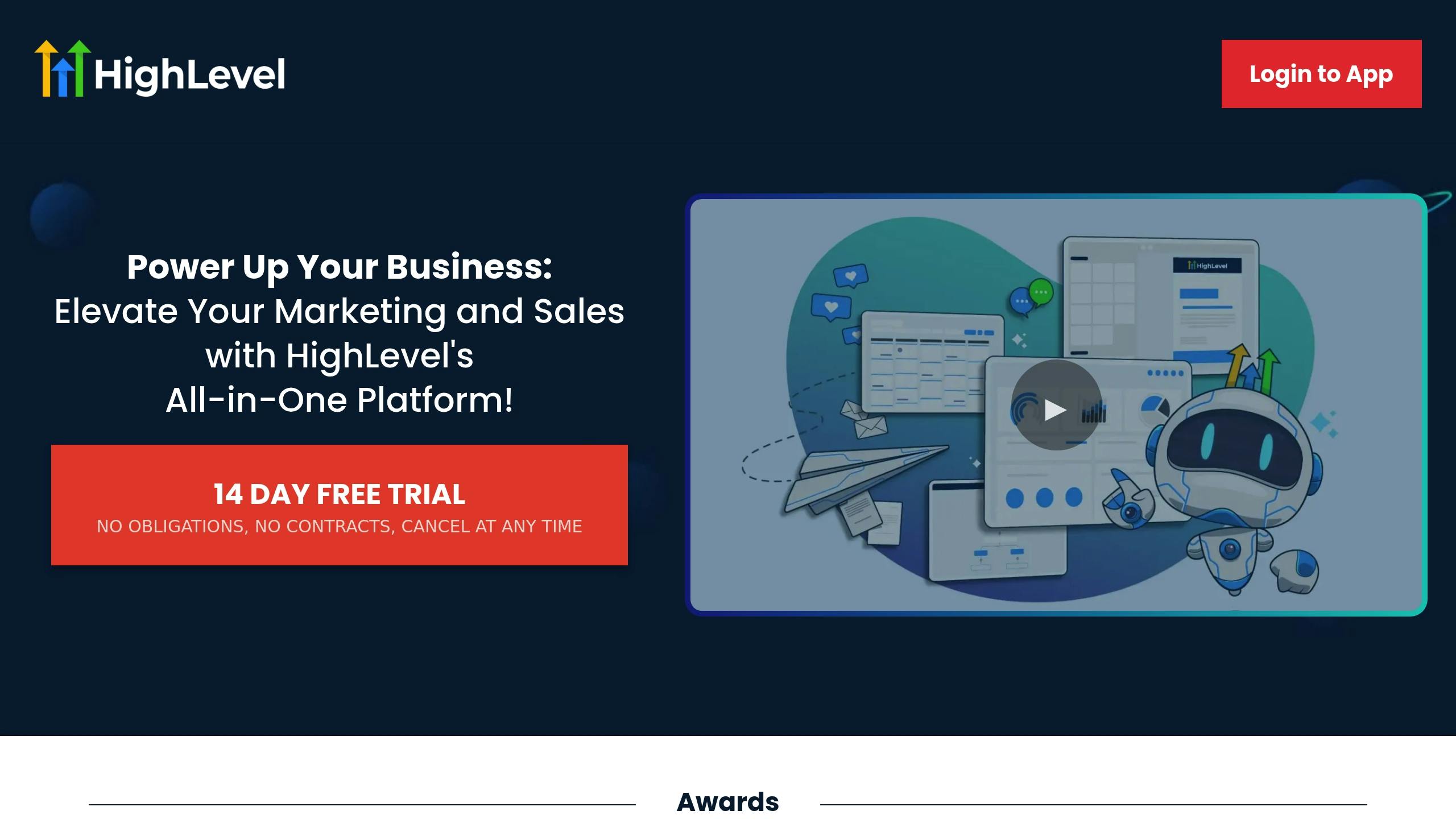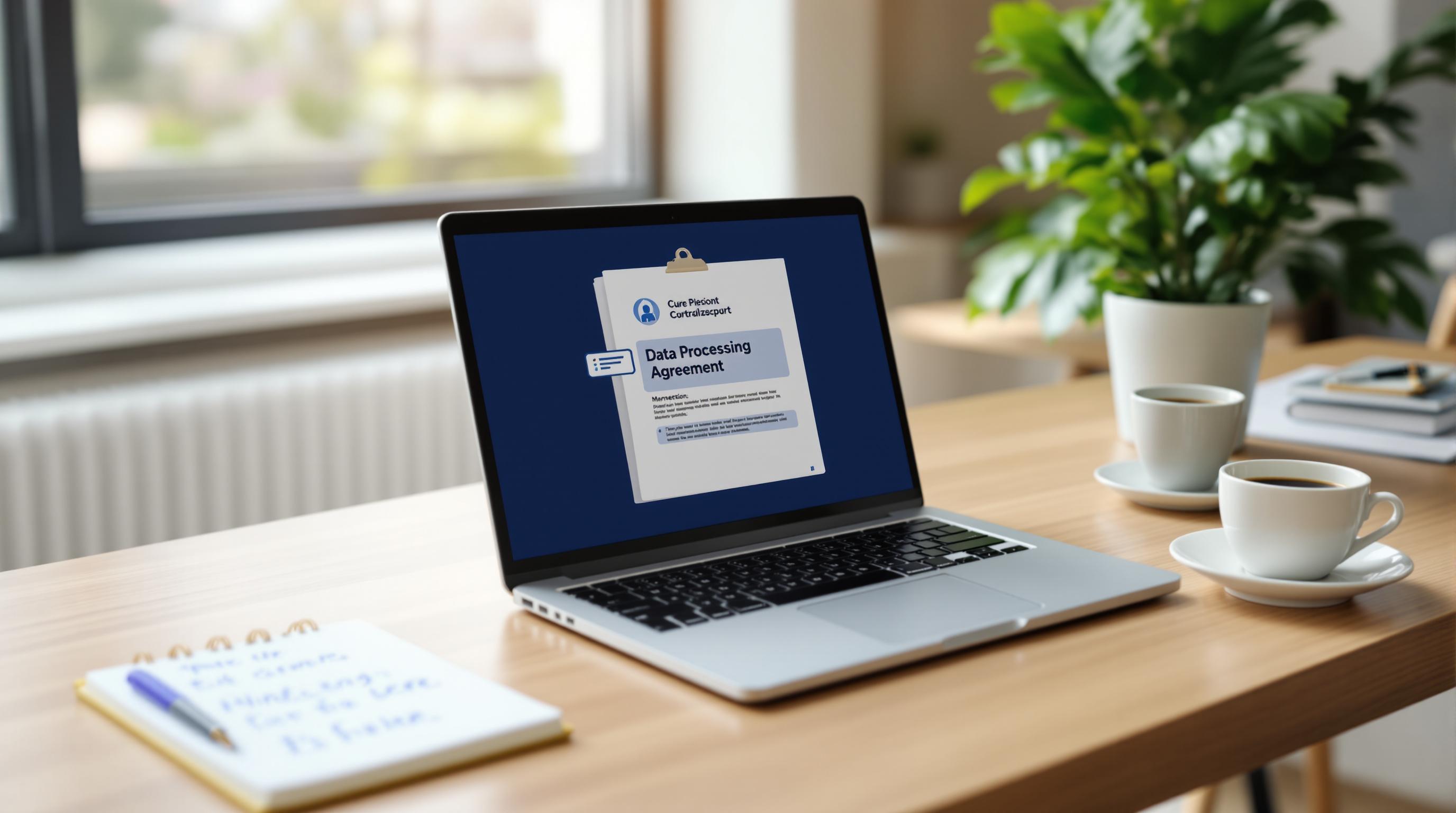Want to help contractors boost profits and save time? HighLevel workflows solve common issues like slow lead response, missed appointments, and poor follow-ups - key factors that hurt ROI. Here's a quick breakdown of how HighLevel can streamline operations for home service contractors:
- Faster Lead Handling: Automate lead routing and prioritize urgent cases like emergency repairs.
- Smart Scheduling: Sync calendars, reduce errors, and send automated confirmations with payment links.
- Better Follow-Ups: Use automated surveys, review requests, and maintenance reminders to retain customers.
Key Results:
- 77% higher lead conversion rates with 5-minute response times.
- 35% fewer missed appointments through automated scheduling.
- 58% more repeat business with structured follow-ups.
These workflows directly address contractor pain points and drive measurable ROI. Read on to learn how to set them up and track success.
How I automate Estimates and Proposals (for Contractors) with GoHighLevel
Core HighLevel Workflows for Contractors

These three key workflows tackle common challenges while offering multiple ways to boost ROI:
Lead Processing and Sorting
With HighLevel's Smart Lists, contractors can manage leads more effectively using dynamic segmentation. The system automatically directs leads based on the type of project and its urgency. For example, if a lead submits a form about an "active leak", emergency protocols are triggered immediately. On the other hand, inquiries about planned renovations follow a standard process.
Additionally, geofenced web forms help contractors filter leads by location, ensuring they focus on serviceable areas.
| Lead Type | Automated Action |
|---|---|
| Emergency Services | Immediate call routing & SMS alerts |
| Planned Services | Qualification sequence |
| Commercial Projects | Bid request workflow |
Automated Scheduling System
HighLevel's scheduling feature syncs seamlessly with Google and Outlook calendars, offering round-robin assignment for efficient task distribution. For more complex jobs requiring multiple technicians, the system coordinates schedules to streamline appointments.
A standout feature: automated confirmation messages that include:
- Technician profiles, service maps, checklists, and Stripe payment links.
Customer Follow-Up System
The follow-up workflow is designed to retain customers and encourage repeat business through a three-phase system:
- 48 hours after service: Sends an SMS satisfaction survey.
- 72 hours after service: Requests reviews, providing direct links to Google or Yelp.
- 30 days after service: Sends a maintenance reminder tailored to the service provided.
This approach delivers measurable results. For instance, using Twilio's local caller ID increases answered calls by 22% [7]. Plus, material list templates are automatically added to job-specific workflows, making communication more efficient.
These workflows work together to cut down on manual labor, improve customer satisfaction, and drive profitability for contractors.
sbb-itb-f031672
High-Impact ROI Workflows
These advanced automations are designed to boost revenue by enhancing core operational workflows. By integrating predictive scheduling and upsell opportunities, HVAC contractors can create systems that directly contribute to increased profits.
Additional Service Sales
HVAC contractors can identify customers with systems older than 10 years and target them with replacement offers. This can be done effectively by analyzing installation dates and maintenance records.
Seasonal campaigns that combine SMS and email have been shown to achieve 29% higher open rates [4]. Here's how these campaigns can be structured:
| Campaign Type | Trigger | Content Strategy |
|---|---|---|
| Pre-Season Maintenance | Weather Pattern Alert | Equipment Care Tips + Service Discount |
| Equipment Upgrade | Age Milestone | ROI Calculator + Financing Options |
| Emergency Prevention | Seasonal Change | Safety Checklist + Priority Booking |
Service Schedule Automation
Automating service scheduling can significantly increase repeat business through timely maintenance reminders and replacement alerts. For instance, Stealth Agents reported a 40-60% increase in repeat service rates by leveraging well-designed workflows [8].
Key automation strategies include sending notifications about equipment lifespan, safety alerts, and financing options. The Collective Booking feature simplifies complex service scenarios by automating notifications for all involved parties in multi-phase projects.
Performance metrics highlight the effectiveness of these automations:
- 35% fewer missed appointments thanks to automated booking management [8]
- 20% higher average ticket value with bundled service offers
- 77% boost in lead conversion rates through optimized workflows [8]
Maintenance reminders that include visuals like equipment lifespan graphics and video testimonials have proven to be particularly effective. This approach ties directly into the goal of maximizing ROI through smarter, revenue-driven workflows.
Setting Up HighLevel Workflows
Contractor Workflow Analysis
To set up workflows effectively, agencies need to analyze their operations carefully. This ensures workflows, such as those for emergency and scheduled services, are tailored to business needs.
Here are some key factors to evaluate during the analysis process:
| Business Factor | Analysis Points | Workflow Implications |
|---|---|---|
| Service Type | Emergency vs. Scheduled | SMS alert priority, response timing |
| Geographic Range | Service radius boundaries | Geo-fencing settings in Smart Lists |
| Peak Seasons | Demand fluctuations | Automated capacity adjustments |
| Team Structure | Field crew organization | Rules for round-robin assignment |
Workflow Setup Instructions
A great example of effective workflow setup comes from Allstate Restoration. By automating their payment process, they cut their average collection time from 14 days to just 6. This mirrors the success seen in plumbing businesses, where automation boosted repeat business by 58% [5].
Here are the essential components to configure for impactful workflows:
-
Lead Processing Configuration
Use HighLevel's workflow builder to create filters specific to contractors. This helps streamline lead routing and management. -
Service Automation Setup
Set up conditional rules based on the type of service:- Emergency services trigger instant SMS alerts.
- Maintenance contracts send renewal reminders at 60, 30, and 7 days.
- Project-based tasks initiate photo approval workflows.
-
Follow-Up System Integration
Effective follow-up workflows include:- Automated post-service summaries.
- Payment tracking synced with QuickBooks Online [3].
- Review requests triggered by job completion tags.
- Seasonal maintenance campaigns scheduled in advance.
Avoid These Common Setup Mistakes
- Forgetting to define geographic service boundaries in automation rules [3].
- Using generic templates instead of tailoring messages to the industry [9].
- Skipping accounting software integration for payment tracking [1].
Testing and Metrics
To ensure workflows perform as expected, test them with:
- QA checks using test accounts.
- Team pilots to gather feedback.
- Analytics-based optimization for templates.
Track these metrics to measure success:
- Lead conversion rates (industry average for home services: 25-40% [2]).
- Response times.
- Upsell rates.
- Customer satisfaction scores.
Conclusion: Improving Results with HighLevel
The numbers make it clear: using HighLevel workflows can significantly boost ROI for home service contractors. These gains come from focusing on key workflows like lead processing, smart scheduling, and structured follow-ups.
For agencies aiming to deliver better outcomes for contractors, starting with automated lead processing is the quickest way to see results. This workflow tackles a major issue - missed opportunities - by tagging and routing leads within just 5 minutes [8]. The result? A noticeable improvement in business performance.
Here are some key metrics to track for evaluating workflow success:
| Metric | Impact on ROI |
|---|---|
| Lead Response Under 5min | 77% higher conversions |
| 23% Admin Task Reduction | $12k+ annual savings [1] |
| 30% Show Rate Improvement | Reduced revenue loss |
Following best practices, it’s smart to take a phased approach. Start with one high-impact workflow and monitor baseline metrics for 30 days before scaling further.
To maintain success, conduct monthly reviews of template performance and quarterly audits of workflows. Regular A/B testing of communication templates and ongoing KPI tracking [6] help fine-tune results over time. This approach directly addresses common contractor challenges like slow responses, scheduling issues, and missed follow-ups, ensuring consistent improvement in ROI.



